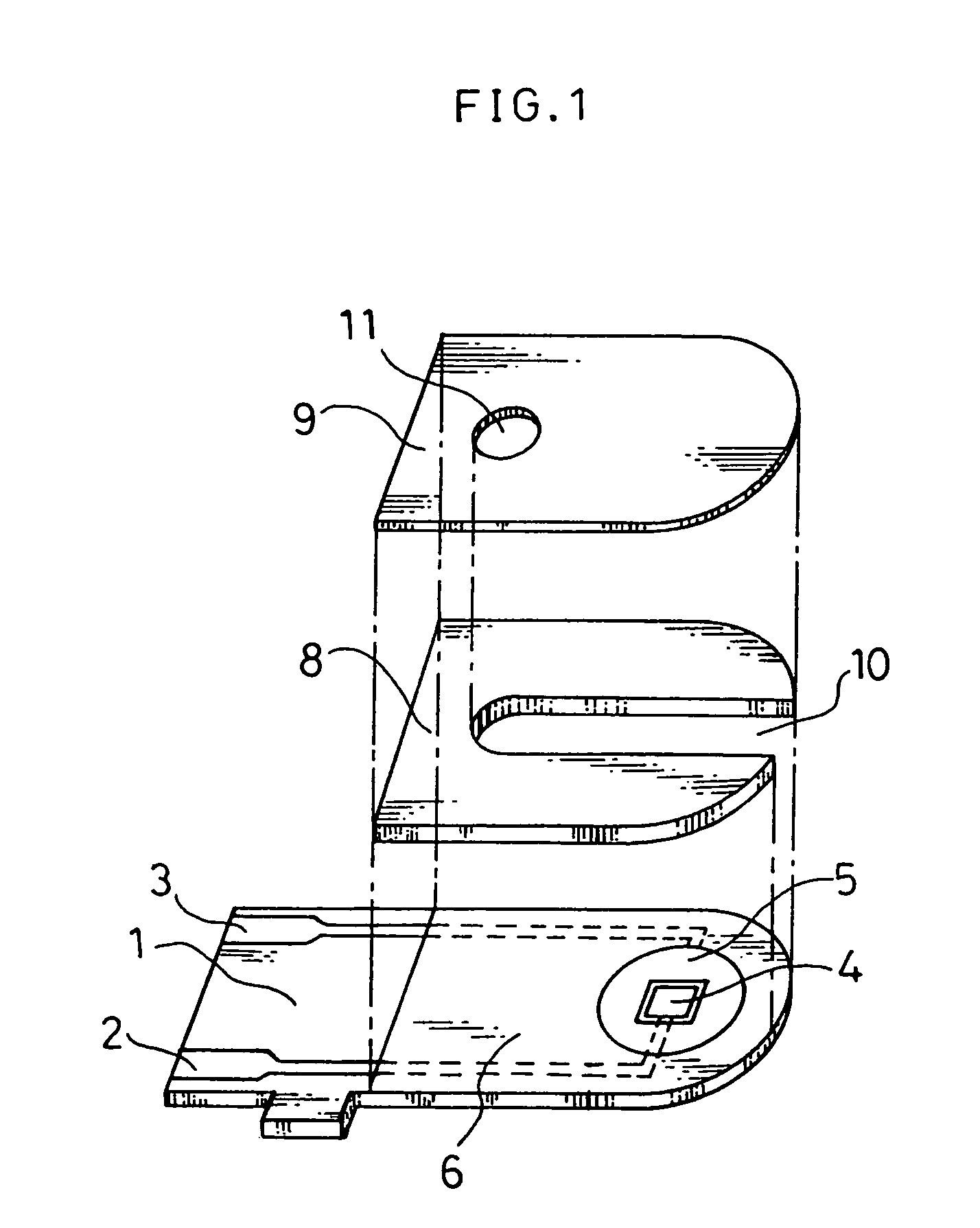Glucose sensor
a technology of glucose sensor and glucose, which is applied in the field of glucose sensor, can solve the problems of risk of enzyme denaturation, and insufficient amount of enzyme that reacts with the substra
- Summary
- Abstract
- Description
- Claims
- Application Information
AI Technical Summary
Benefits of technology
Problems solved by technology
Method used
Image
Examples
example 1
[0065]After forming the CMC layer 7a in the same manner as in Comparative Example 1, 5 μl of a mixed aqueous solution containing 1000 U / ml of PQQ-GDH, 50 mM of potassium ferricyanide and 40 mM of potassium gluconate was dropped onto the CMC layer 7a and dried to form the layer 7b. A glucose sensor was fabricated in such a manner.
[0066]Next, in the same manner as in Comparative Example 1, the response characteristic graph was produced for the sensor immediately after the fabrication and the sensor after being stored in a sealed container containing silica gel for one week at 40° C. The results are shown in FIG. 4. It would be understood from FIG. 4 that there is a certain correlation between the glucose concentration and the response current value. It would be understood by a comparison with Comparative Example 1 that the sensor of this example had a smaller lowering in the response current value in the response after the one-week storage at 40° C., particularly in a range of not les...
example 2
[0068]After forming the CMC layer 7a in the same manner as in Comparative Example 1, 5 μl of a mixed aqueous solution containing 1000 U / ml of PQQ-GDH, 50 mM of potassium ferricyanide, 40 mM of potassium gluconate and 0.5 mM of potassium hydrogen phthalate was dropped onto the CMC layer 7a and dried to form the layer 7b. A glucose sensor was fabricated in such a manner.
[0069]In the same manner as in Comparative Example 1, the response characteristic graph was produced for the sensor immediately after the fabrication and the sensor after being stored in a sealed container containing silica gel for one week at 40° C. The results are shown in FIG. 6. It would be understood from FIG. 6 that there is almost no difference in the response characteristics between the sensor immediately after the fabrication and the sensor after the one week storage at 40° C., and the storage characteristic of the sensor of this example is significantly improved in comparison with Comparative Example 1.
[0070]...
example 3
[0071]After forming the CMC layer 7a in the same manner as in Comparative Example 1, 5 μl of a mixed aqueous solution containing 1000 U / ml of PQQ-GDH, 50 mM of potassium ferricyanide, 40 mM of potassium gluconate and 0.5 mM of maleic acid was dropped onto the CMC layer 7a and dried to form the layer 7b. A glucose sensor was fabricated in such a manner.
[0072]In the same manner as in Comparative Example 1, the response characteristic graph was produced for the sensor immediately after the fabrication and the sensor after being stored in a sealed container containing silica gel for one week at 40° C. The results are shown in FIG. 8. It would be understood from FIG. 8 that there is almost no difference in the response characteristics between the sensor immediately after the fabrication and the sensor after the one-week storage at 40° C., and the storage characteristic of the sensor of this example is improved in comparison with Comparative Example 1.
[0073]FIG. 9 shows a comparison of th...
PUM
| Property | Measurement | Unit |
|---|---|---|
| concentration | aaaaa | aaaaa |
| voltage | aaaaa | aaaaa |
| temperature | aaaaa | aaaaa |
Abstract
Description
Claims
Application Information
 Login to View More
Login to View More - R&D
- Intellectual Property
- Life Sciences
- Materials
- Tech Scout
- Unparalleled Data Quality
- Higher Quality Content
- 60% Fewer Hallucinations
Browse by: Latest US Patents, China's latest patents, Technical Efficacy Thesaurus, Application Domain, Technology Topic, Popular Technical Reports.
© 2025 PatSnap. All rights reserved.Legal|Privacy policy|Modern Slavery Act Transparency Statement|Sitemap|About US| Contact US: help@patsnap.com



